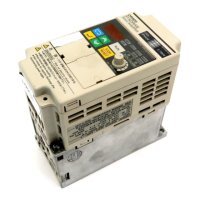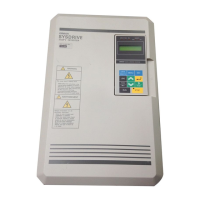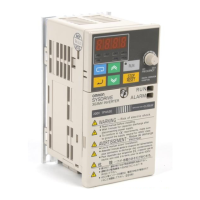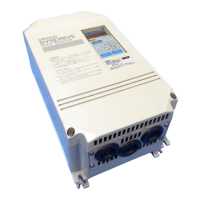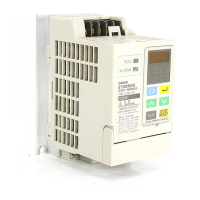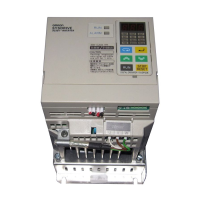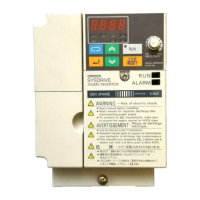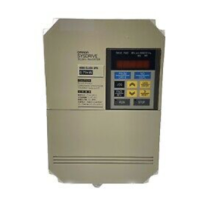3-31
3-5-2 PID Control
PID
(proportional, integral, and derivative) control is a method to control a
mechanical
system
by making the feedback values obtained from the mechanical system agree with
the set point that has been preset.
This method makes it possible to control a mechanical system that has dead time.
The
Inverter is not suitable for PID
control that requires a response time of 50 ms or less.
Refer
to the following for examples of PID control that can be performed
by the Inverter
as
well as the operation of PID control in detail and the settings and adjustments of the
parameters.
H Examples of PID Control
Refer to the following for examples of PID control that can be performed by the Inverter.
Application Control Required sensor
Speed control The Inverter uses the feedback of speed data of the
mechanical system and makes the operation speed of
the mechanical system agree with the set point.
The Inverter controls the mechanical system in
synchronization with another mechanical system that
inputs its speed data as the set point to the Inverter.
Tachometric generator
Pressure control The Inverter performs constant pressure control with the
feedback of pressure data.
Pressure sensor
Flow control The Inverter performs flow control with the feedback of
flow data.
Flow sensor
Temperature control The Inverter performs temperature control using fans with
the feedback of temperature data.
Thermocouple
Thermistor
H PID Control Operation
The
following graph shows control output (output frequency) changes with a constant
deviation (i.e., the
difference between the set point and feedback is constant).
Deviation
Time
Control
output
Derivative
control
PID control
Integral control
Proportional control
Time
D Proportional Control
Control
output in proportion to the deviation is obtained through proportional control. Proportional
control alone cannot make the deviation zero.
Preparing for Operation Chapter 3

